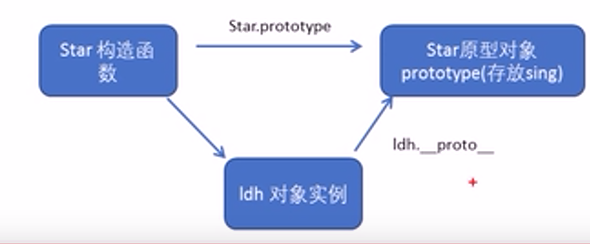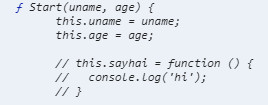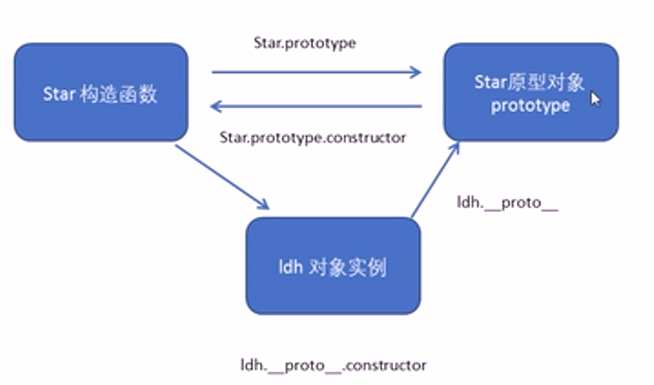构造函数-prototype
function Start(uname, age) { this.uname = uname; this.age = age; this.sayhai = function () { console.log('hi'); } } var zjl = new Start('zjl', '41'); var reol = new Start('reol', '22');
以上的构造函数中,new了zjl和reol两个对象,存在一个sayhai的方法,二者的内容一样,但由于方法为复杂数据类型,会分别开辟一个新的内存空间,白白浪费了内存,可以使用构造函数内置的属性prototype,将一些不变的方法定义在其原型对象上,达到节省内存的目的
function Start(uname, age) { this.uname = uname; this.age = age; // this.sayhai = function () { // console.log('hi'); // } } //核心 Start.prototype.sayhai = function () { console.log('hi'); } var zjl = new Start('zjl', '41'); var reol = new Start('reol', '22'); zjl.sayhai();
最后的输出正常,但内存被节省了
其构造出来的对象之所以能调用prototype,是因为zjl中系统自动添加了指向prototype的原型对象的属性,__proto__
__proto__与prototype是等价的,console.log(zjl.__proto__===Star.prototype);输出为true

系统会在prototype和__proto__中自动添加constructor的属性,其指向原来的构造函数即Star
输出
console.log(zjl.__proto__.constructor);
输出结果为:

但是,如果这样赋值,则会自动覆盖掉系统生成的constructor
Start.prototype = { sayhi: function () { console.log('hi'); } }
则输出 console.log(zjl.__proto__.constructor);会提示错误

原型链:




